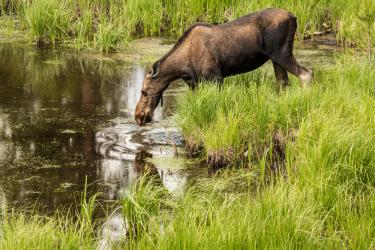Why Are BMPs Important?
Forest Best Management Practices protect your woodland wildlife, soils and waterways, but watersheds do not stop at property boundaries so BMPs are also important to your neighbors, county, state and the nation at large.
Two-thirds of the drinking water in the United States originates as runoff from forested lands. Protection of waterways is a priority for any responsible woodland owner, but it is also a requirement by many state governments. Permits may be required for management activities that have the potential to disturb the health of wetlands and waterways.
The Clean Water Act was originally passed in 1972 out of growing public concern about pollution in waters throughout the nation. This pollution was coming from many different sources including industry, government, agriculture, and individuals, and the aim of the Act was to create a framework that would ensure that all of our waterways were fishable and swimmable, and healthy for people and wildlife.
Under the Clean Water Act, the US Environmental Protection Agency mandates that states provide Best Management Practices for landowners engaged in activities that have the potential to impact downstream waterways and water bodies–anything from agriculture and forestry to the development of golf courses.
All states now offer guidance on how to proceed with forest management activities like logging and road building in a manner that maintains healthy waterways. This guidance provided by states and the federal government helps protect watersheds surrounding private land, but it also provides valuable information and techniques to help landowners protect their own lands, and the water and wildlife that dwell upon them. If Best Management Practices are not followed the impacts can be significant and long-standing, from:
- Rutting and compaction that destroys your soil’s ability to absorb water.
- Soil erosion leading to loss of forest nutrients and polluted waterways.
- Altered water flow patterns that cause the drying of wetlands, flooding of trees and other plant communities, loss of available moisture and nutrients for trees, and increased erosion and channeling of the forest floor.
Because of the possible implications of forest management work, some states mandate certain Best Management Practices, particularly in regard to stream crossings, sedimentation and erosion protections, and wetland protection. Other states offer guidance for landowners to follow on a voluntary basis. Some states even provide workshops to help you better understand Best Management Practices and apply them to your woodland. Check our reference section or call your state Department of Natural Resources to find out what your state requires, and the guidance your state provides.
How can I get more tips?
It’s simple! Enter your email below.

